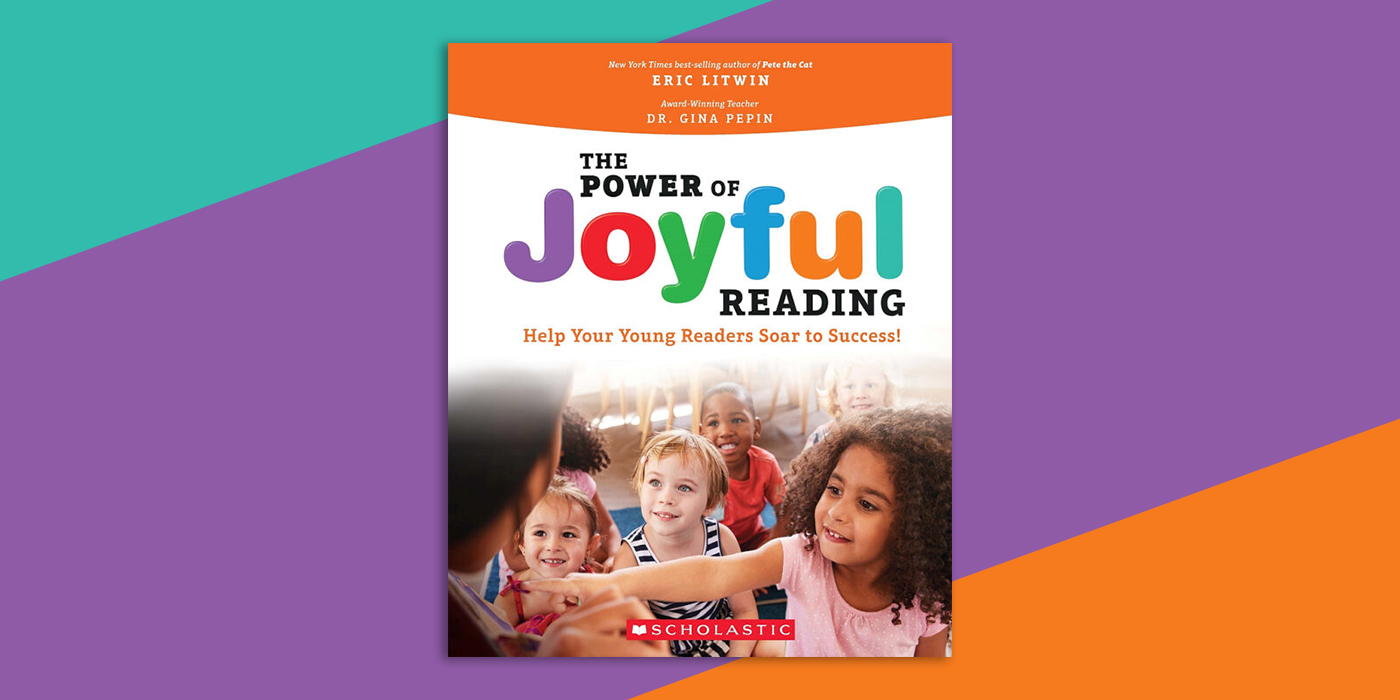Young children thrive when they are immersed in joyful and engaging shared reading experiences with caring teachers, throughout the day, day after day, all year long. This leads them to love books, enjoy reading, and see themselves as readers. It also builds their basic reading skills and knowledge, which prepares them for successful reading instruction.
In our book, The Power of Joyful Reading: Help Your Young Readers Soar to Success, we explain why successful reading depends upon joyful and engaging shared reading experiences, and we demonstrate how to put them to work in daycare, preschool, kindergarten, and early elementary classrooms. We call this the Joyful Reading Approach, and it will help you grow happy and successful early readers and watch them thrive!
One important component of the Joyful Reading Approach is encouragement. Encouragement and praise are powerful tools that help your students learn to read. Your students are highly motivated by your words. They take them to heart. So, as you begin to immerse your students in engaging shared reading experiences, shower them with honest, abundant, supportive, and effective praise. But don’t stop there—praise should be a natural and important part of all classroom reading experiences!
Here are a few key ideas to keep in mind when praising your students.
· Praise immediately, generously, and enthusiastically.
· Praise all students authentically, sincerely, and uniquely.
· Focus on their effort and your feelings, rather than their ability.
Praising your students immediately encourages continued effort. It lets them know what to focus on. Let your praise flow freely. Praise all the time. Praise all your students. Be creative with your praise and use fun and colorful language. This itself is a joyful language experience and will make your praise even more effective.
Also, be sure to focus on students’ reading effort rather than the end result or final product. By doing that—and offering comments such as, “I can see you are giving this your best effort!”—you help children develop a growth mindset (Dweck, 2008). With a growth mindset, children believe that they can stretch beyond their current abilities. They learn through praise that their effort and practice empower them to move beyond their current “selves” and grow as learners.
“You are a great reader!” is an example of fixed-mindset praise (Dweck, 2008), and can be unnerving for children. It implies that if things change, they could become a terrible reader. But by offering growth comments, you reassure and encourage the child to keep trying. The child can accept that kind of growth mindset praise without fear or doubt. Here are a few examples:
· “I love listening to you read.”
· “I love the way your voice sings when you read aloud!”
· “When you read, I feel excited!”
Keep your focus on the reading journey and appreciate what students accomplish. Praising them along the way helps them realize that everything takes time, effort, and concentration.
Here are three fun ways to use growth-mindset praise in your classroom:
1. Two Stars and a Wish
Two Stars and a Wish begins with praises (stars) of a student’s work or effort. The wish (wand) is a suggestion for improvement. It is important to always have more stars than wishes. You may increase the number of praises but keep the wish singular. This is such a fun, tangible way to praise students and provide constructive feedback. Students can use Two Stars and a Wish when they are providing feedback to one another and/or use it for personal reflection. Download the Two Stars and a Wish poster here.
2. Shout-Out Wall
Turn any bulletin board into a “Shout-Out Wall.” Use a simple template, index cards, or stick-on notes. Here are a few favorite titles to use. You can freely interpret what each one means.
· Cheers for Peers
· Wonderful Words
· Reading Rockstar
· High Fives
You can use stick-on notes as a status to show how your students are progressing in reading. Students can write their reading status (like a social media post) to show what they are working on and/or to celebrate a milestone or target toward their reading goal.
3. The Joyful Reading Poster
Another powerful way to encourage shared reading is to create a poster that shows all the wonderful things your students learn from joyful and engaging shared reading experiences. Be sure your poster can be read by both children and adults.
Hang the poster somewhere with a lot of foot traffic, such as by the door. This way you can talk about it with your students as they come and go. You can also discuss the poster with parents when they visit.
The key, when talking with parents, is to share just a few ideas at a time. A lot of enthusiasm and a little information, day after day, goes a long way.
Learn more about the Joyful Reading Approach and how you can use it support reading in your classroom by purchasing our book here. And watch us discuss the benefits and power of shared reading experiences here.
About the authors:
Eric Litwin is a former third-grade teacher and the number-one New York Times best-selling original author of the Pete the Cat series, as well as the author of The Nuts and Groovy Joe. Eric’s books have sold over 13 million copies, been translated into 17 languages, and won 26 literacy awards.
Dr. Gina Pepin holds an Ed.D. in Teacher Leadership and an M.A. in Reading, Literacy, and Assessment. She is the 2018–2019 Upper Michigan Teacher of the Year. She is currently a K–3 reading teacher in Escanaba, Michigan, and an online instructor of graduate literacy courses at GCU and NMU.
